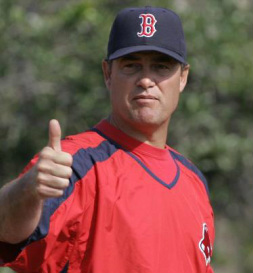
The Kansas City Royals have added some depth to their starting rotation by receiving right-handed pitcher Ervin Santana and $1 million from the Los Angeles Angels in exchange for minor league pitcher Brandon Sisk. Sisk, at age 26, had back to back solid seasons with AAA Omaha with a 1.41 ERA in 32 innings in 2011 and a 2.54 ERA in 67.1 innings in 2012. He is a decent piece to look to for LA in case of an injury or struggles in the bullpen for 2013.
The bigger part of this deal clearly is Santana. The talented right hander will be heading into his age 30 season in 2013 and the question mark for him is consistency. He has showed flashes of brilliance throughout his career including tossing a no-hitter in 2012 in Cleveland. He has enjoyed four seasons (2006, 2006, 2010-11) of having an ERA+ of over 100. His back-to-back solid seasons in 2010 (3.92 ERA) and 2011 (3.38 ERA) are great signs. However, going back to consistency, he has had his share of struggles. He has had three seasons of sporting an ERA of over 5. Unfortunately for Santana, his 2012 ERA of 5.16 is fresh in everyone’s mind. Another glaring problem in 2012 was home runs. Santana served up a ridiculous 39 long balls in 2012 which lead the entire league and was 12 more than his previous career high of 27. This is due to his crazy home run per fly ball percentage of 14.8, which is almost double the league average of 7.6%. He also posted a career low ERA+ of just 73. He has also shown the ability to throw over 200 innings over the course of a big league season. However the innings have not been as high during his more unsuccessful seasons. The Royals can only hope they are getting the 2011 Ervin Santana and his ridiculous HR/FB will regress to his career norms.
First Reactions:
Winner: Royals. They only gave up a minor league reliever and this is a low risk move for them. Kansas City is in great need of starting pitching and Santana is a guy that has the ability to eat some innings and be successful for the organization moving forward.
Loser: Angels. Received a 26-year old reliever and lost depth in their rotation. Not a move that will tear down the team, but will especially hurt if team cannot resign RHP Zack Greinke.
The bigger part of this deal clearly is Santana. The talented right hander will be heading into his age 30 season in 2013 and the question mark for him is consistency. He has showed flashes of brilliance throughout his career including tossing a no-hitter in 2012 in Cleveland. He has enjoyed four seasons (2006, 2006, 2010-11) of having an ERA+ of over 100. His back-to-back solid seasons in 2010 (3.92 ERA) and 2011 (3.38 ERA) are great signs. However, going back to consistency, he has had his share of struggles. He has had three seasons of sporting an ERA of over 5. Unfortunately for Santana, his 2012 ERA of 5.16 is fresh in everyone’s mind. Another glaring problem in 2012 was home runs. Santana served up a ridiculous 39 long balls in 2012 which lead the entire league and was 12 more than his previous career high of 27. This is due to his crazy home run per fly ball percentage of 14.8, which is almost double the league average of 7.6%. He also posted a career low ERA+ of just 73. He has also shown the ability to throw over 200 innings over the course of a big league season. However the innings have not been as high during his more unsuccessful seasons. The Royals can only hope they are getting the 2011 Ervin Santana and his ridiculous HR/FB will regress to his career norms.
First Reactions:
Winner: Royals. They only gave up a minor league reliever and this is a low risk move for them. Kansas City is in great need of starting pitching and Santana is a guy that has the ability to eat some innings and be successful for the organization moving forward.
Loser: Angels. Received a 26-year old reliever and lost depth in their rotation. Not a move that will tear down the team, but will especially hurt if team cannot resign RHP Zack Greinke.


 RSS Feed
RSS Feed